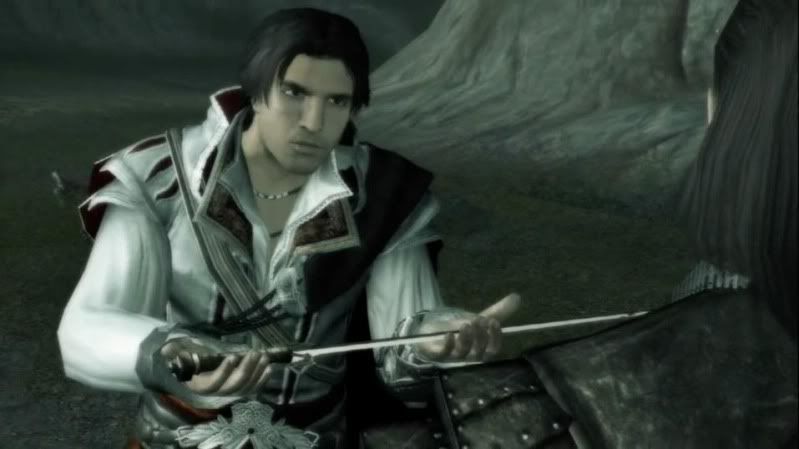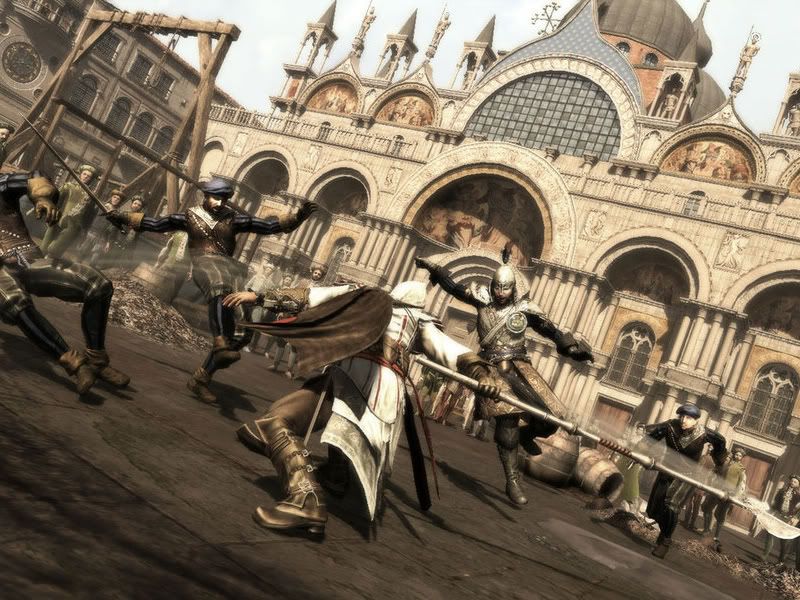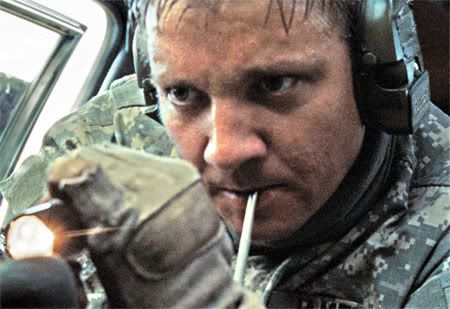
[audio:http://www.blueinkalchemy.com/uploads/gits.mp3]
Back in the days of the late 80s and early 90s, when the excess of the previous decade were giving way to the ‘edgy’ goth culture that emerged to dominate a lot of the media in the next – The Crow, Spawn, A Nightmare Before Christmas, etc – America was getting its first real dose of animé. The Sci-Fi Channel, back when it was called ‘The Sci-Fi Channel’ and didn’t worry about its Google page rank because, well, Google didn’t really exist yet, ran a few animé features every year or so just to whet our whistles for what lay in store for us on the other side of the Pacific. The first round included Lensman, Casshan Robot Hunter and Vampire Hunter D, which while visually stunning and unique in their aesthetics, amounted to pretty standard but well-done action flicks. It wasn’t until a couple of years later that we were introduced to the truly introspective and headspace-violating works such as Akira and this week’s review fodder, Ghost in the Shell.
There’s also the fact that none of those three ‘early’ animé features are available on Netflix, which is a shame because Lensman is a great reworking of E.E. Smith’s novels, Casshan is one of the best treatments of a Mega Man-style protagonist I’ve ever seen, and Vampire Hunter D is… hmm? Oh, right, Ghost in the Shell, sorry about that.

The year is 2029. The world is connected by a global information network that is to the Internet what a Peterbilt 378 is to last year’s Ford pick-up. In Tokyo, the government has divided its various responsibilities into sections, and Section 9 is their covert operations and network security division. Top badass amongst the ranks of Section 9 is Major Motoko Kusanagi, who along with being a crack shot, an expert martial artist and pretty damn smart in terms of both brain and mouth, is also a full conversion cyborg, meaning that other than her brain and most of her spinal column, her body is entirely robotic. A case involving a hacker called ‘the Puppet Master’ falls into Section 9’s lap, and the investigation leads Motoko to question the nature of her own existence even as she tries to unravel the mystery as to who this hacker is and what they’re after.
Ghost in the Shell, like a great deal of animé, is based upon the manga of the same name. The manga was crafted by a guy named Shirow Masamune, and in the interest of full disclosure, I need to make the following statement: I love Shirow Masamune. This is the guy who brought us Black Magic, Appleseed and Dominion, which might be better known by the animé feature called Tank Police. His work is, in my opinion, best described as ‘camp cyberpunk’, a marriage of the mentality behind such works as Blade Runner and Snow Crash with balls-to-the-wall action and genuinely funny humor that has mechanized characters like Briareos from Appleseed acting far more human than some humans do in similar works, even his own. There’s plenty of philosophy, sociological commentary and bits of political satire woven into his stories, and they’re told and drawn well enough that you’re having just as good a time contemplating what he’s trying to say as you do watching cops with tanks blast their way through the bad guys. Ghost in the Shell is exemplary of this style, with discussions on the nature of human existence occurring almost simultaneously with cybernetic supercops doing battle against advanced walking tanks.
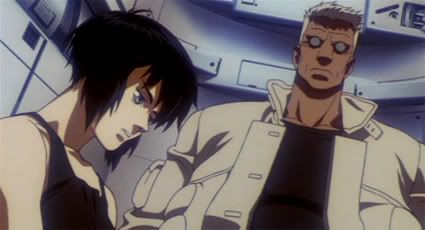
The big guy’s Battou. He’s awesome.
He gives us the phrase ‘standard-issue big gun’ among other things.
The action from the manga exists almost intact in the animé feature. Instead of trying to wow an audience with laser guns or giant fighting robots, Ghost in the Shell keeps the action, for the most part, on the human level. While the Major is super-strong, very fast and well-experienced in combat, when the action takes place it happens on a scale to which an audience can relate. I mean, seeing a space battle happen in, say, Star Blazers or Robotech is exciting, but a great deal of that comes from our relationship with the pilots of those fantastic vehicles. Without characters that we like and can relate to, it’d just be so much sound and fury like the opening of Revenge of the Sith. The grounding of Tokyo 2029 in reality, coupled with the interesting characters involved in the combat, lends it weight and makes it more exciting, ramping up the tension as the stakes get higher.
Unfortunately Ghost in the Shell doesn’t have the pace or the occasional tongue-in-cheek aside of its manga source material. Some bits of the film just drag, especially when it comes to Motoko’s navel-gazing. It’s like watching a tense episode of Law & Order: SVU only to have Stabler & Benson stop in the middle of tracking down a serial rapist to discuss the sustainability of the world in general and New York City in particular. It’s interesting, sure, but we didn’t come here for moral philosophy, get the hell on with the detective work. Instead of weaving these questions into the narrative, director Oshii Mamoru stops the action dead to have us ruminate on the nature of human existence.
There’s also the fact that the Major inexplicably gets naked any time she needs to use her cloaking device. “Therm-optic camouflage” didn’t require nudity in the manga, and even in the film a guy is able to use therm-optics just by pulling up the hood of his jumper – he didn’t have to whip out his junk to turn invisible. I don’t object to the idea of seeing Motoko in her skivvies, even if she is a cyborg, but the gratuity and lack of necessity for it in context kind of bugs me.
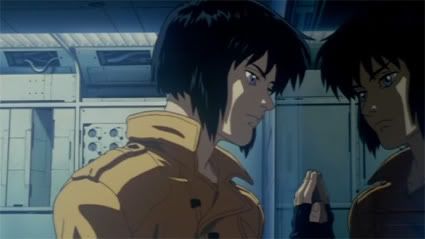
Sad cyborg is sad.
Ghost in the Shell was ground-breaking for its time. Now, “ground-breaking” is not entirely synonymous with “good”. It’s also a phrase that can get abused by people in the marketing world. Sonic Unleashed, for example, could be described as ground-breaking in that video game series because never before as a hedgehog that runs fast turned into a hulking fur-covered pile of rage and sharp bits that’d be called a ‘werewolf’ if it weren’t a complete misnomer. The DaVinci Code broke new ground for anti-Church conspiracy theorists, but the book is at its best when it’s wedged under a piece of furniture to keep it from wobbling. Twilight was ground-breaking in both its existence as genre fiction aimed at young female readers and the psychological and sexual implications of its characters, but it seemed like the flat characterizations and plodding story pace were set to drain vampires of all of their menace and mystique until the advent of Daybreakers. Incidentally, one has to wonder the fun that could be had if the aforementioned vampire hunter D came across the Cullen household. Hilarity would ensue, I’m sure.
Anyway, Ghost in the Shell is not only a ground-breaking work in terms of cyberpunk animé and post-modern information-age personal philosophy but also pretty damn good as a story. Long treatises and monologues aside, this is a seminal work of the genre and definitely worth seeing if you have any interest in well-done hand-crafted animation that isn’t afraid to be violent, sexy or intellectually interesting for adults. The thing about the film which ultimately works against it is, as good as Shirow’s work is, it tends to be dense, with layers of philosophical and socio-political commentary layered between the character development and action sequences. It’s a similar problem that we have with the recent adaptation of Appleseed, and I suspect that if Black Magic or Dominion were to be revisited as films, it’d be no different. Trying to cram everything Shirow does in his works into a two hour film without a careful hand in the editing process can leave the final result feeling disjointed and lead to some problems with pace. Ghost in the Shell is pretty much the best example of this, but it’s also a fantastic example of the counterpoint to the problem with adapting Shirow’s work to film.
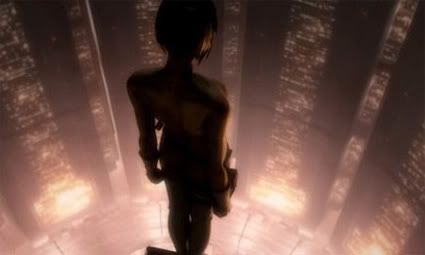
Even today, scenes like this are gorgeous.
Even when there isn’t anything going on, it’s extremely well-drawn or well-rendered nothing. Even if you’re not an animé fan and just have a passing interest in things like cyberpunk action, artificial intelligence that doesn’t want to destroy the world or just characters that are both intelligent and badass, you can do a hell of a lot worse than Ghost in the Shell. And if you like it as a feature, go read the manga or, better yet, check out Stand-Alone Complex, an animé television series that stays a lot closer to Shirow’s original vision. You can expand on a lot of the themes and subjects in those inner layers when you have a dozen hour-long episodes to work with instead of a feature with a ninety minute running time. I mean, imagine if you tried to take one of the many, many themes from a tv series like Star Trek: The Next Generation, let’s say relocating a native population for the sake of governmental whims, and condense it into a feature film that’s accessible to the masses as well as diehard fans. The result would probably be a total disaster! I mean, who would be so stupid as to…
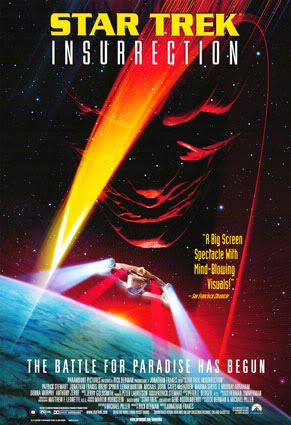
…Wait…
Josh Loomis can’t always make it to the local megaplex, and thus must turn to alternative forms of cinematic entertainment. There might not be overpriced soda pop & over-buttered popcorn, and it’s unclear if this week’s film came in the mail or was delivered via the dark & mysterious tubes of the Internet. Only one thing is certain… IT CAME FROM NETFLIX.


